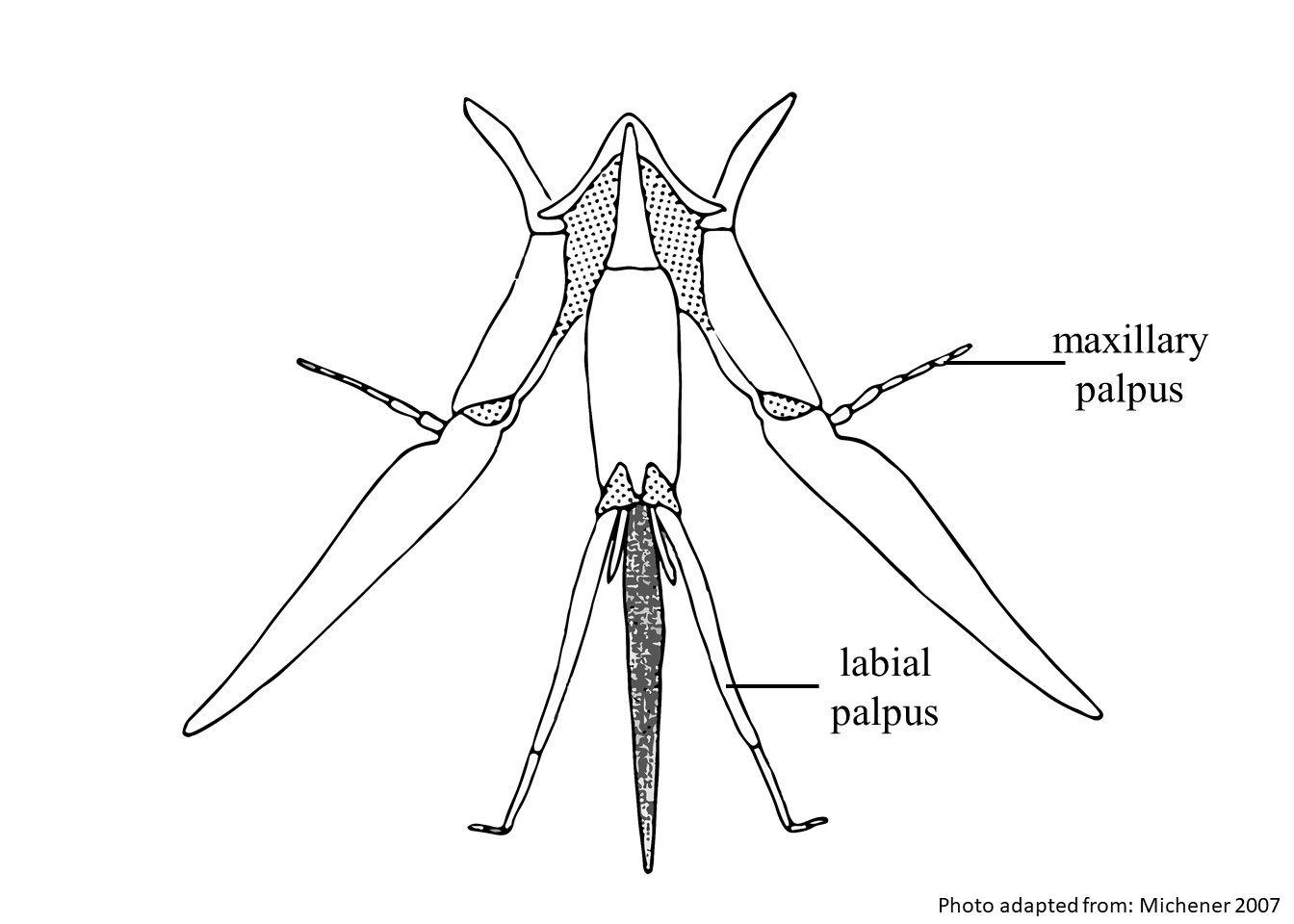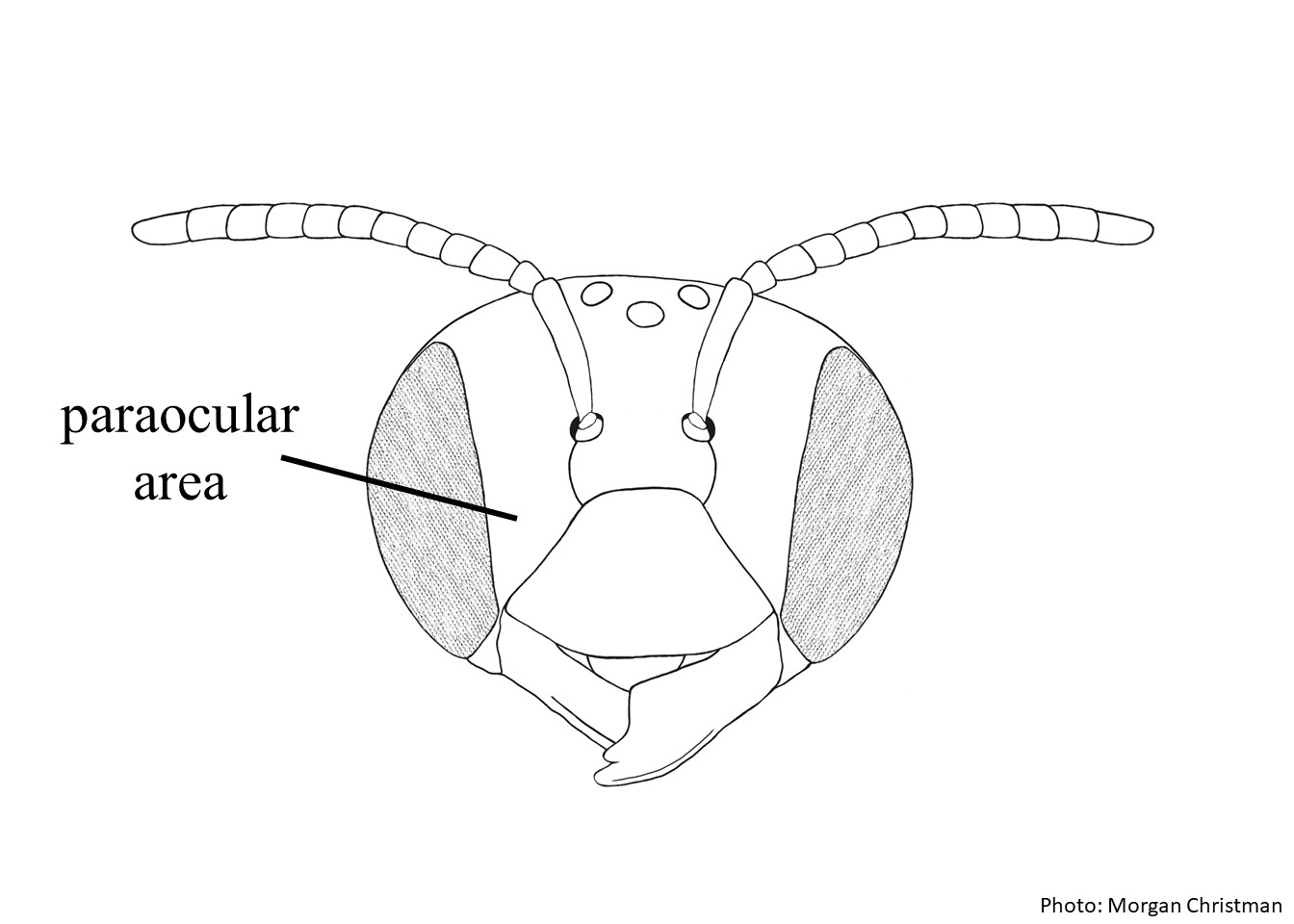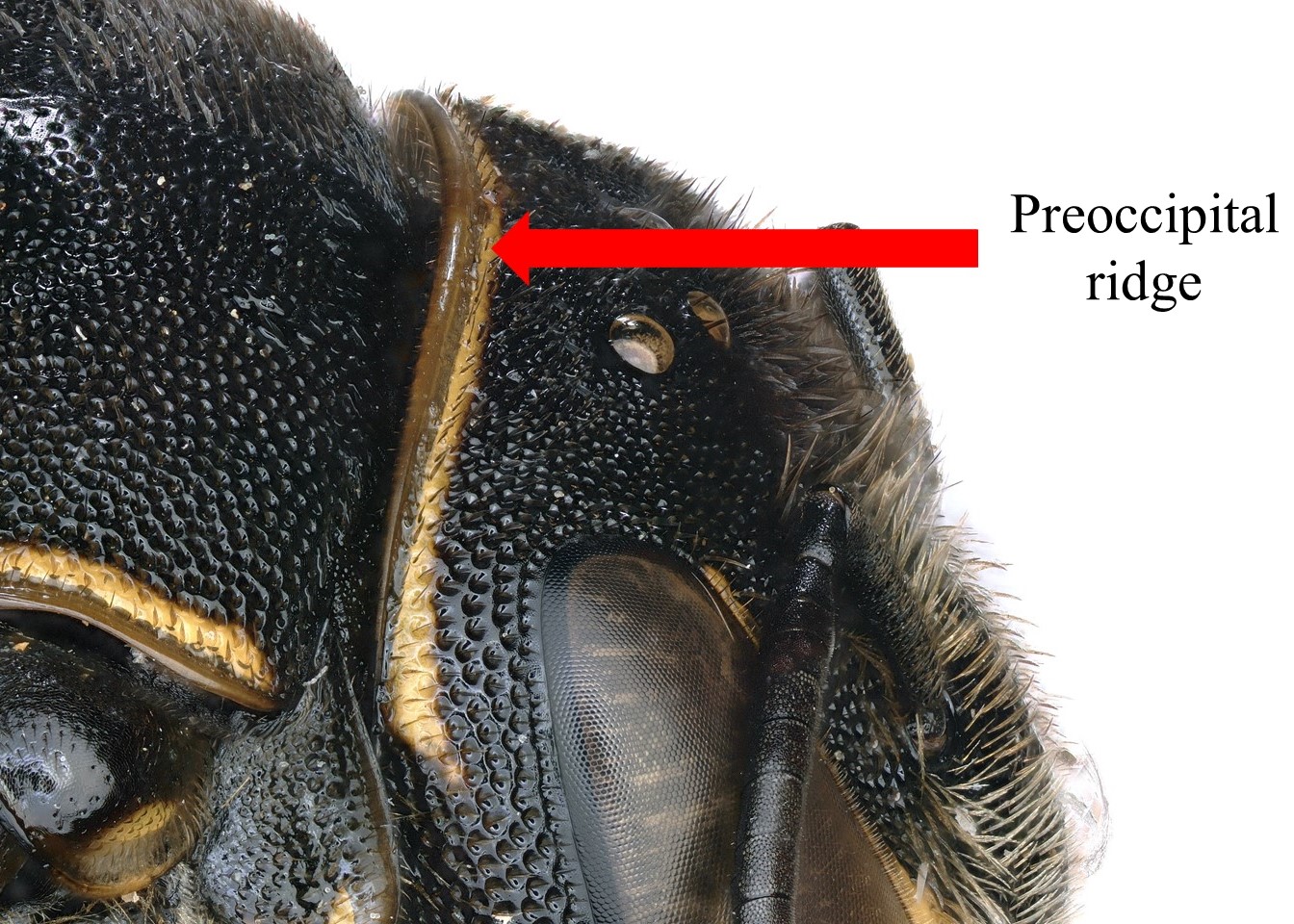Family: Apidae
Subfamily: Xylocopinae
Tribe: Ceratinini
Genus: Ceratina Latreille, 1802
Subgenus: Xanthoceratina Vecht, 1952
Common name: small carpenter bees
Ceratina (Xanthoceratina) have black to red integumentintegument:
a tough, protective outer layer
, usually with extensive yellow markings on the head, thorax, and abdomen (Hirashima 1971aHirashima 1971a:
Hirashima, Y. 1971. Subgeneric classification of the genus Ceratina Latreille of Asia and West Pacific, with comments on the remaining subgenera of the world (Hymenoptera, Apoidea). Journal of the Faculty of Agriculture Kyushu University 16 (4): 349ndash;375.). Their body length can vary from 5.0–10.5 mm (Michener 2007Michener 2007:
Michener, C.D. 2007. The Bees of the World (2nd ed.). Johns Hopkins University Press, Baltimore and London, 953 pp.).
(modified from Hirashima 1971aHirashima 1971a:
Hirashima, Y. 1971. Subgeneric classification of the genus Ceratina Latreille of Asia and West Pacific, with comments on the remaining subgenera of the world (Hymenoptera, Apoidea). Journal of the Faculty of Agriculture Kyushu University 16 (4): 349ndash;375.)
 6-segmented.
6-segmented. areas with yellow maculations.
areas with yellow maculations. area above antennal socket impunctateimpunctate:
area above antennal socket impunctateimpunctate: rounded.
rounded. with graduligraduli:
with graduligraduli: and S3S3:
and S3S3: present.
present. and S6S6:
and S6S6: , although gradulusgradulus:
, although gradulusgradulus: sometimes evanescent or nearly absent.
sometimes evanescent or nearly absent. to S5S5:
to S5S5: of male densely covered with short, white setaesetae:
of male densely covered with short, white setaesetae: with two small, rounded teeth medially on apicalapical:
with two small, rounded teeth medially on apicalapical: two rounded median teeth in the middle.
two rounded median teeth in the middle. bluntly rounded or faintly bituburculate.
bluntly rounded or faintly bituburculate.Ceratina (Xanthoceratina) looks very similar to Ceratina (Lioceratina), and it has been suggested that these subgenera may be synonymous (Michener 2007Michener 2007:
Michener, C.D. 2007. The Bees of the World (2nd ed.). Johns Hopkins University Press, Baltimore and London, 953 pp.). Female Ceratina (Xanthoceratina) differ in the distinct basitibial spine and male Ceratina (Xanthoceratina) differ in the four bundles of hairs on genitaliagenitalia:
all the genital structures collectively
which are absent in Ceratina (Lioceratina) (Michener 2007Michener 2007:
Michener, C.D. 2007. The Bees of the World (2nd ed.). Johns Hopkins University Press, Baltimore and London, 953 pp.).
Ceratina (Xanthoceratina) are known to visit the following plant species: Saurauia nudiflora (Actinidiaceae), Rubus moluccanus (Rosaceae), Impatiens platypetala (Balsaminaceae), Persicaria chinensis (Polygonaceae), Trevesia sundaica (Araliaceae), and an undetermined Cucurbitaceae (Van Der Vecht 1952Van Der Vecht 1952:
Van Der Vecht J. 1952. A preliminary revision of the Oriental species of the genus Ceratina (Hymenoptera, Apidae). Zoologische Verhandelingen 16: 1‒85.).
There are no published records on the nesting habits of Ceratina (Xanthoceratina), but as in other Ceratina, they are suspected to use pithy stems and small, hollowed branches of plants.
Ceratina (Xanthoceratina) includes seven described species (Van Der Vecht 1952Van Der Vecht 1952:
Van Der Vecht J. 1952. A preliminary revision of the Oriental species of the genus Ceratina (Hymenoptera, Apidae). Zoologische Verhandelingen 16: 1‒85.; Ascher and Pickering 2020Ascher and Pickering 2020:
Ascher, J.S. and J. Pickering. 2020. Discover Life bee species guide and world checklist (Hymenoptera: Apoidea: Anthophila). https://www.discoverlife.org/mp/20p?see=Carinulaamp;name=Megachileamp;flags=subgenus :).
There are no known invasives.
Ceratina (Xanthoceratina) are found in southeastern Asia, from the southern part of China south through Indonesia (Michener 2007Michener 2007:
Michener, C.D. 2007. The Bees of the World (2nd ed.). Johns Hopkins University Press, Baltimore and London, 953 pp.).

Distribution map generated by Discover Life -- click on map for details, credits, and terms of use.
Ascher J. S. and J. Pickering. 2020. Discover Life bee species guide and world checklist (Hymenoptera: Apoidea: Anthophila). http://www.discoverlife.org/mp/20q?guide=Apoidea_species.
Hirashima, Y. 1971. Subgeneric classification of the genus Ceratina Latreille of Asia and West Pacific, with comments on the remaining subgenera of the world (Hymenoptera, Apoidea). Journal of the Faculty of Agriculture Kyushu University 16 (4): 349–375.
Michener, C.D. 2007. The Bees of the World (2nd ed.). Johns Hopkins University Press, Baltimore and London, 953 pp.
Vecht, J. Van Der. 1952. A preliminary revision of the Oriental species of the genus Ceratina (Hymenoptera, Apidae). 2001. Verhandel., Leiden, 16: l–85.